Related Research Articles

The Vietnam War was a conflict in Vietnam, Laos, and Cambodia from 1 November 1955 to the fall of Saigon on 30 April 1975. It was the second of the Indochina Wars and was officially fought between North Vietnam and South Vietnam. The north was supported by the Soviet Union, China, and other communist states, while the south was supported by the United States and other anti-communist allies. The war is widely considered to be a Cold War-era proxy war. It lasted almost 20 years, with direct U.S. involvement ending in 1973. The conflict also spilled over into neighboring states, exacerbating the Laotian Civil War and the Cambodian Civil War, which ended with all three countries officially becoming communist states by 1976.
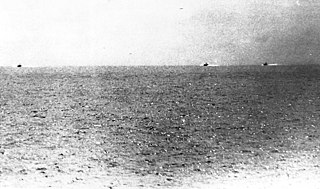
The Gulf of Tonkin incident was an international confrontation that led to the United States engaging more directly in the Vietnam War. It consisted of a confrontation on August 2, 1964, when United States forces were carrying out covert operations close to North Vietnamese territorial waters and North Vietnamese forces responded. The United States government falsely claimed that a second incident occurred on August 4, 1964, between North Vietnamese and United States ships in the waters of the Gulf of Tonkin. Originally, US military claims blamed North Vietnam for the confrontation and the ostensible, but in fact imaginary, incident on August 4. Later investigation revealed that the second attack never happened; the official American claim is that it was based mostly on erroneously interpreted communications intercepts. The National Security Agency, a subsidiary of the US Defense Department, deliberately skewed intelligence to create the impression that an attack had been carried out.
The domino theory is a geopolitical theory which posits that increases or decreases in democracy in one country tend to spread to neighboring countries in a domino effect. It was prominent in the United States from the 1950s to the 1980s in the context of the Cold War, suggesting that if one country in a region came under the influence of communism, then the surrounding countries would follow. It was used by successive United States administrations during the Cold War as justification for American intervention around the world. Former U.S. President Dwight D. Eisenhower described the theory during a news conference on 7 April 1954, when referring to communism in Indochina as follows:
Finally, you have broader considerations that might follow what you would call the "falling domino" principle. You have a row of dominoes set up, you knock over the first one, and what will happen to the last one is the certainty that it will go over very quickly. So you could have a beginning of a disintegration that would have the most profound influences.
A casus belli is an act or an event that either provokes or is used to justify a war. A casus belli involves direct offenses or threats against the nation declaring the war, whereas a casus foederis involves offenses or threats against its ally—usually one bound by a mutual defense pact. Either may be considered an act of war. A declaration of war usually contains a description of the casus belli that has led the party in question to declare war on another party.

David Halberstam was an American writer, journalist, and historian, known for his work on the Vietnam War, politics, history, the Civil Rights Movement, business, media, American culture, Korean War, and later, sports journalism. He won a Pulitzer Prize for International Reporting in 1964. Halberstam was killed in a car crash in 2007, while doing research for a book.


The Strategic Hamlet Program was a plan by the government of South Vietnam in conjunction with the US government and ARPA during the Vietnam War to combat the communist insurgency by pacifying the countryside and reducing the influence of the communists among the rural population.

Walt Whitman Rostow was an American economist, professor and political theorist who served as national security advisor to president of the United States Lyndon B. Johnson from 1966 to 1969.
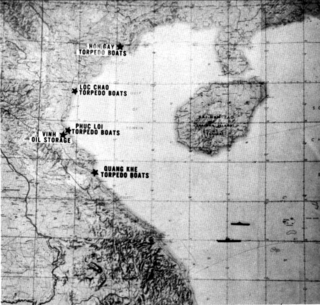
Operation Pierce Arrow was a U.S. bombing campaign at the beginning of the Vietnam War.
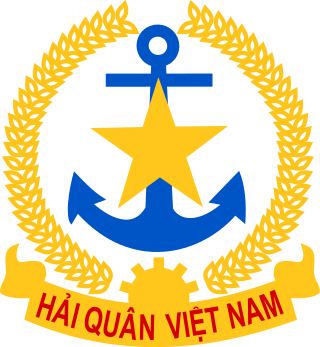
The Vietnam People's Navy, or the Naval Service, also known as the Vietnamese People's Navy or simply Vietnam/Vietnamese Navy, is the naval branch of the Vietnam People's Army and is responsible for the protection of the country's national waters, islands, and interests of the maritime economy, as well as for the co-ordination of maritime police, customs service and the border defence force.

DESOTO patrols were patrols conducted by U.S. Navy destroyers equipped with a mobile "van" of signals-intelligence equipment used for intelligence collection in hostile waters. The USS De Haven became the namesake for these patrols. De Haven performed the first patrol off the coast of China in April 1962. The USS Agerholm carried out the first patrol to target North Vietnam in the Gulf of Tonkin in December 1962.
United States involvement in the Vietnam War began shortly after the end of World War II in Asia, first in an extremely limited capacity and escalating over a period of 20 years. The U.S. military presence peaked in April 1969, with 543,000 American combat troops stationed in Vietnam. By the conclusion of the United States's involvement in 1973, over 3.1 million Americans had been stationed in Vietnam.
Operation 34A was a highly classified United States program of covert actions against the Democratic Republic of Vietnam, consisting of agent team insertions, aerial reconnaissance missions and naval sabotage operations.

The attack on Camp Holloway occurred during the early hours of February 7, 1965, in the early stages of the Vietnam War. Camp Holloway was a helicopter facility constructed by the United States Army near Pleiku in 1962. It was built to support the operations of Free World Military Forces in the Central Highlands of South Vietnam.
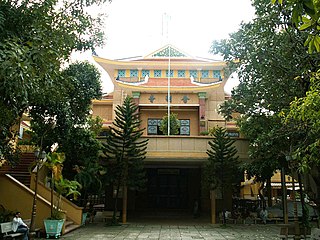
The Xá Lợi Pagoda raids were a series of synchronized attacks on various Buddhist pagodas in the major cities of South Vietnam shortly after midnight on 21 August 1963. The raids were executed by the Army of the Republic of Vietnam Special Forces under Colonel Lê Quang Tung, and combat police, both of which took their orders directly from Ngô Đình Nhu, younger brother of the Roman Catholic President Ngô Đình Diệm. Xá Lợi Pagoda, the largest pagoda in the South Vietnamese capital, Saigon, was the most prominent of the raided temples. Over 1,400 Buddhists were arrested, and estimates of the death toll and missing ranged up to the hundreds. In response to the Huế Vesak shootings and a ban on the Buddhist flag in early May, South Vietnam's Buddhist majority rose in widespread civil disobedience and protest against the religious bias and discrimination of the Catholic-dominated Diệm government. Buddhist temples in major cities, most prominently the Xá Lợi pagoda, became focal points for protesters and assembly points for Buddhist monks from rural areas.

USS Fortify (AM-446/MSO-446) was an Agile-class minesweeper acquired by the U.S. Navy for the task of removing Contact, Magnetic, and Acoustic mines that had been placed in the water to prevent the safe passage of ships.

Formal relations between the United States and Vietnam were initiated in the nineteenth century under U.S. president Andrew Jackson, but relations soured after the U.S. refused to protect the Kingdom of Vietnam from French invasion. During World War II, the U.S. covertly assisted the Viet Minh in fighting Japanese forces in French Indochina, though a formal alliance was not established. After the dissolution of French Indochina in 1954, the U.S. supported the capitalist South Vietnam as opposed to Marxist-Leninist North Vietnam and fought North Vietnam directly during the Vietnam War. After American withdrawal in 1973 and the subsequent fall of South Vietnam in 1975, the U.S. applied a trade embargo and severed ties with Vietnam, mostly out of concerns relating to Vietnamese boat people and the Vietnam War POW/MIA issue. Attempts at re-establishing relations went unfulfilled for decades, until U.S. president Bill Clinton began normalizing diplomatic relations in the 1990s. In 1994, the U.S. lifted its 30-year trade embargo on Vietnam. The following year, both countries established embassies and consulates. Relations between the two countries continued to improve into the 21st century.
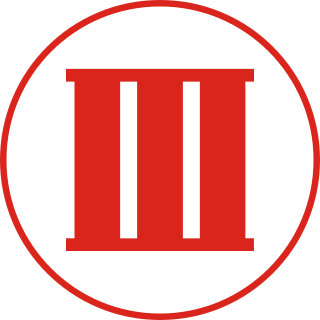
III Corps was a corps of the Army of the Republic of Vietnam (ARVN), the army of the nation state of South Vietnam that existed from 1955 to 1975. It was one of four corps in the ARVN, and oversaw the region of the country surrounding the capital Saigon.
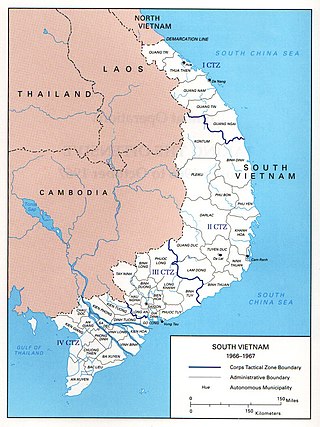
South Vietnam was in political chaos during much of the year, as generals competed for power and Buddhists protested against the government. The Viet Cong (VC) communist guerrillas expanded their operations and defeated the South Vietnamese Army of the Republic of Vietnam (ARVN) in many battles. North Vietnam made a definitive judgement in January to assist the VC insurgency with men and material. In November, North Vietnam ordered the People's Army of Vietnam (PAVN) to infiltrate units into South Vietnam and undertake joint military operations with the VC.

The Gulf of Tonkin Resolution or the Southeast Asia Resolution, Pub. L. 88–408, 78 Stat. 384, enacted August 10, 1964, was a joint resolution that the United States Congress passed on August 7, 1964, in response to the Gulf of Tonkin incident.
References
- ↑ McMahon, Robert J. "Changing Interpretations of the Vietnam War" The University of Illinois. Retrieved on 20 April 2014.
- ↑ Halberstam,David (1965). "The Making of a Quagmire: America and Vietnam during the Kennedy Era". Rowman and Littlefield, 2008. ISBN 0742560082.
- ↑ Schlesinger, Arthur (1966). "The Bitter Heritage". Houghton Mifflin Co. ISBN 0395081564.
- ↑ Schlesinger, Arthur (1966). "The Bitter Heritage". Houghton Mifflin Co. ISBN 0395081564. Pg. 37.
- ↑ Wilson, Mary (1995). "Incomplete and Profoundly Confused: A Bibliographic Essay on the Vietnam War". Vanguard University, 1995.
- ↑ Record, Jeffrey. "The Wrong War. Why We Lost in Vietnam". The New York Times .
- ↑ "Containment foreign policy". britannica.com.
- ↑ Tanenhaus, Sam (22 March 2003). "The World: From Vietnam to Iraq; The Rise and Fall and Rise of the Domino Theory". New York Times.
- ↑ Simkin, John. "John F. Kennedy". Spartacus Educational.
- ↑ Sullivan, George (2007). Journalists at Risk: Reporting America's Wars . Twenty-First Century Books. ISBN 978-0761327455.
- ↑ Greenspan, Jesse (1 August 2014). "The Gulf of Tonkin Incident, 50 Years Ago". History.com.